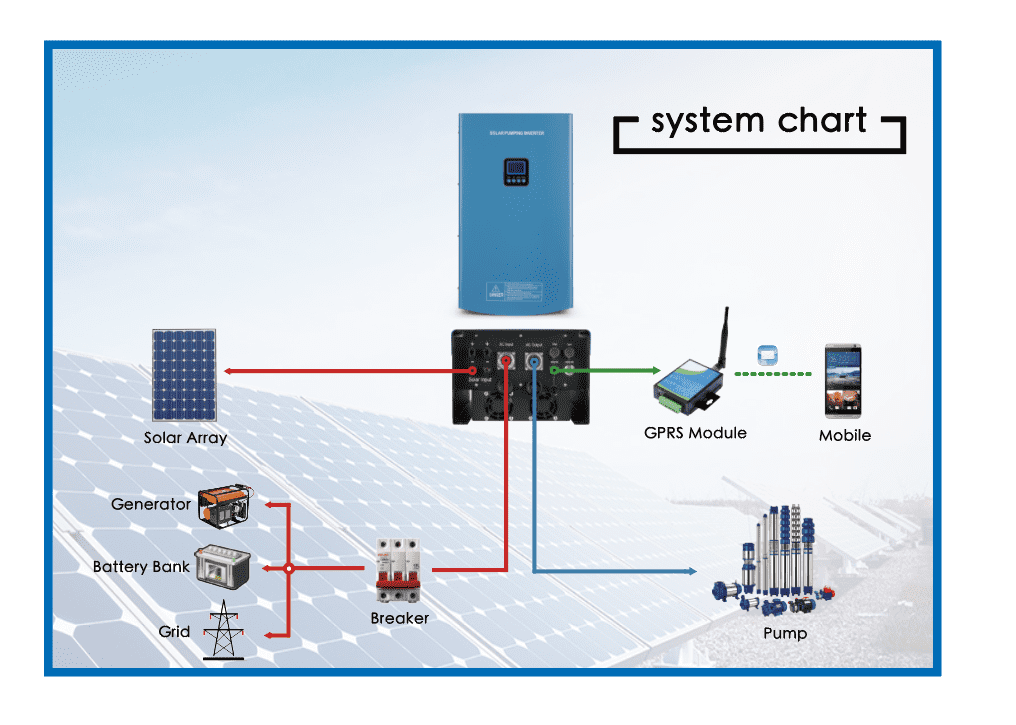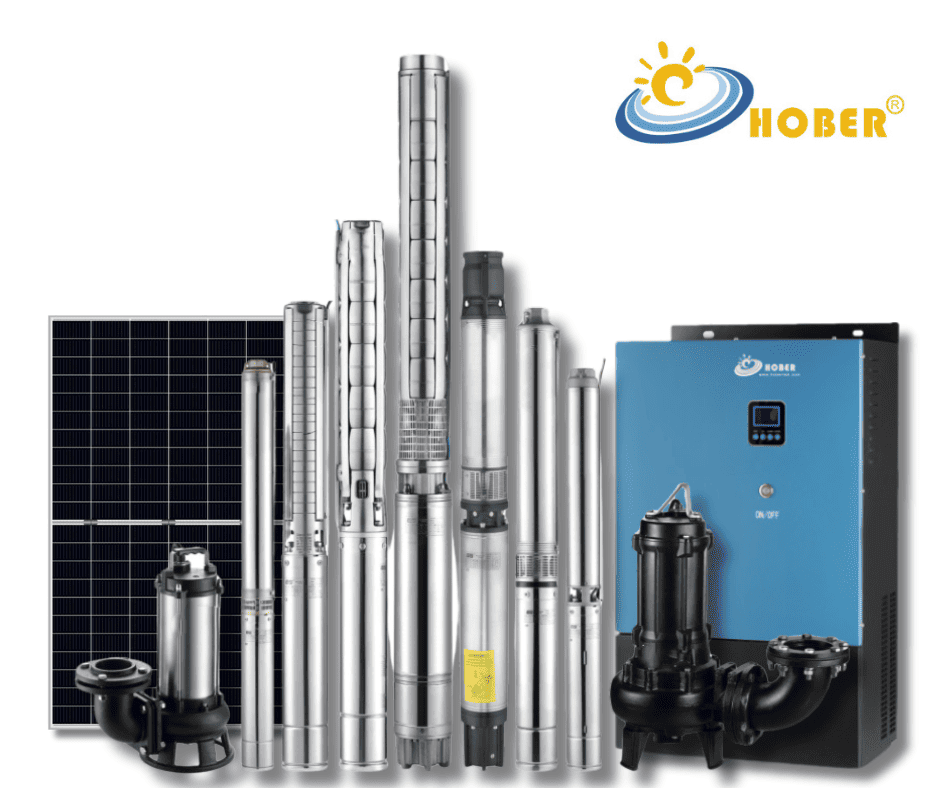Introduction
Solar electric water pumps represent an innovative and eco-friendly approach to water management, providing a sustainable solution for irrigation, livestock watering, and community water supply. These pumps are becoming more efficient and affordable, offering significant savings on electricity bills while ensuring continuous operation. This article delves into the mechanics, benefits, applications, and considerations of solar electric water pumps, emphasizing their ability to operate on both AC and DC power inputs for 24-hour functionality.

Understanding Solar Electric Water Pumps
What Are Solar Electric Water Pumps?
Solar electric water pumps use photovoltaic (PV) panels to convert sunlight into electrical energy, which powers an electric motor to pump water from a source, such as a well, river, or reservoir, to a desired location. These systems can vary in complexity, from simple setups for small-scale irrigation to sophisticated installations for large agricultural operations or community water supplies.
How Do They Work?
- Solar Panels: The system starts with solar panels that capture sunlight and convert it into direct current (DC) electricity.
- Controller: This electricity flows to a controller, which regulates the power to ensure optimal performance and protect the system from electrical anomalies.
- Dual-Power Pump: The controller sends the regulated power to a dual-power pump, which can operate on both DC from the solar panels and AC from the grid or a generator. This ensures the pump can work continuously, even during non-sunny hours.
- Water Delivery: The pump moves the water through pipes to the point of use, whether it’s a storage tank, irrigation system, or livestock watering trough.
Benefits of Solar Electric Water Pumps
1. Environmental Sustainability
Solar electric water pumps offer a green alternative to diesel or grid-powered pumps. They reduce greenhouse gas emissions and dependency on fossil fuels, aligning with global efforts to combat climate change.
2. Cost-Effectiveness
Although the initial investment in solar technology can be high, the operational costs are minimal. Solar pumps use free energy from the sun, eliminating fuel costs and reducing maintenance expenses due to fewer moving parts. The dual-power feature also allows for significant electricity bill savings by minimizing grid power usage.
3. Reliability and 24-Hour Operation
The ability to operate on both AC and DC power inputs ensures that solar water pumps provide a reliable and autonomous water supply, even during cloudy days or nighttime. This 24-hour functionality is crucial for consistent water availability in agriculture, livestock watering, and community water supplies.
4. Scalability and Flexibility
These systems can be tailored to different scales and purposes. Whether for small household gardens or extensive agricultural fields, solar pumps can be customized to meet specific water requirements.
Applications of Solar Electric Water Pumps
1. Agricultural Irrigation
Solar water pumps are extensively used for irrigation in agriculture. They can be programmed to operate during peak sunlight hours, ensuring efficient water use and supporting sustainable farming practices. The dual-power capability ensures uninterrupted irrigation.
2. Livestock Watering
Farmers and ranchers use solar pumps to supply water to livestock, particularly in remote pastures. These systems reduce labor and fuel costs associated with hauling water manually or using diesel-powered pumps, and the dual-power feature guarantees continuous water supply.
3. Community Water Supply
In many developing regions, solar pumps provide a reliable source of clean water for communities, improving health outcomes and reducing the burden on women and children who often travel long distances to fetch water. The 24-hour operation capability ensures consistent water availability.
4. Aquaculture
Solar pumps are also used in aquaculture to circulate and oxygenate water, enhancing the living conditions for fish and other aquatic species, thereby increasing productivity and sustainability of fish farming operations.
Key Features of Dual-Power Solar Water Pumps
1. AC and DC Power Input
The most critical feature of these solar water pumps is their ability to operate on both AC and DC power inputs. This dual-power capability ensures that the pump can switch to grid power or a generator when sunlight is insufficient, guaranteeing continuous operation.
2. Energy Efficiency and Cost Savings
By primarily utilizing solar power and switching to grid power only when necessary, these pumps significantly reduce electricity costs. This energy efficiency translates to substantial savings over time, making them an economically attractive option.
3. Continuous 24-Hour Operation
The dual-power input feature ensures that the pump can work around the clock, providing a reliable water supply regardless of weather conditions. This is especially beneficial for critical applications that require uninterrupted water availability.
4. Enhanced Durability and Longevity
Solar electric water pumps are designed to withstand various environmental conditions. The combination of high-quality components and fewer moving parts reduces the need for frequent maintenance and repairs, extending the pump’s lifespan.
Considerations for Implementing Solar Electric Water Pumps
1. Site Assessment
Before installing a solar water pump, it’s crucial to conduct a thorough site assessment. This includes evaluating solar insolation levels, water source reliability, and the specific water needs of the application.
2. System Sizing
Proper sizing of the solar pump system is essential to ensure it meets the water demand efficiently. This involves calculating the daily water requirements and matching them with the solar energy potential and pump capacity.
3. Initial Investment and Financing
While solar water pumps can save money in the long run, the initial investment can be substantial. Potential users should explore financing options, subsidies, and grants available for renewable energy projects.
4. Maintenance and Support
Although solar pumps require less maintenance than conventional pumps, regular checks and upkeep are necessary to ensure longevity and efficiency. Having access to technical support and spare parts is also vital.
Conclusion
Solar electric water pumps with dual-power input capabilities are a game-changer in sustainable water management. They offer numerous environmental, economic, and social benefits, making them a smart choice for various applications, from agriculture to community water supply. By harnessing the power of the sun and ensuring 24-hour operation through AC and DC inputs, these pumps provide a reliable and cost-effective solution for today’s water challenges. As technology continues to evolve, these systems are likely to become even more efficient and accessible, driving the transition towards a more sustainable and resilient future.

